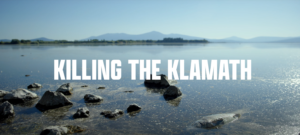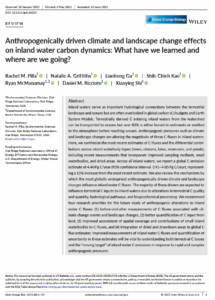I’m a River Guide and Water Lawyer. I’m Scared for the Grand Canyon.
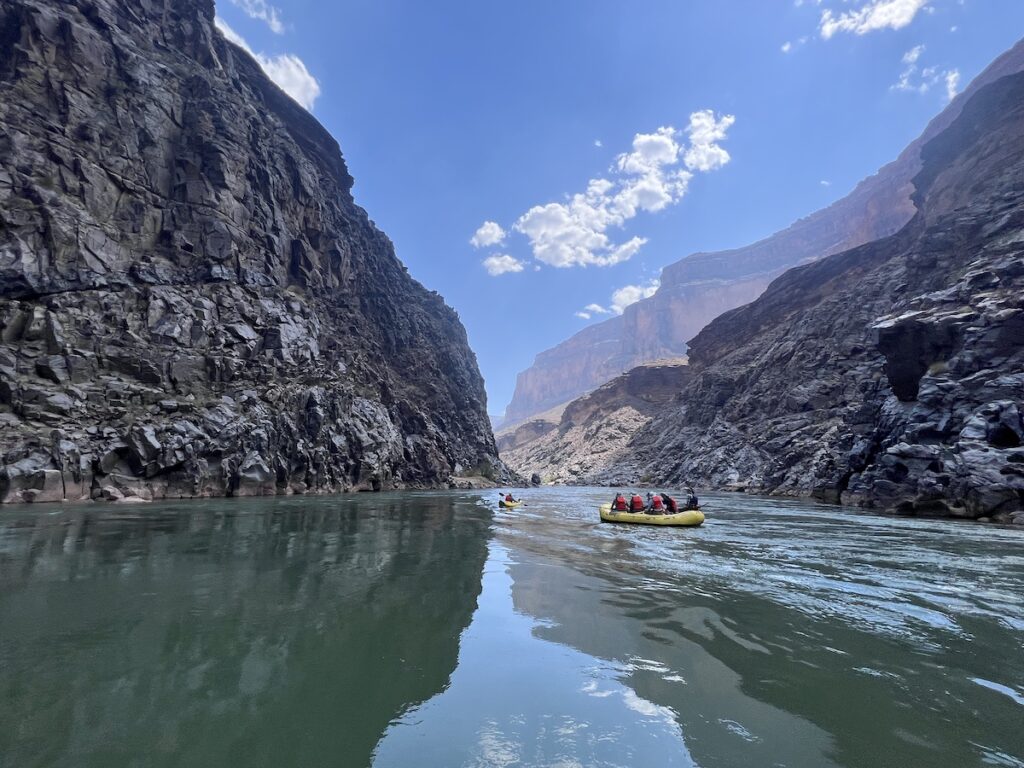
Jocelyn Gibbon is an attorney, policy consultant, and river guide based in Flagstaff, Arizona. She works on Arizona and Colorado River water and sustainability issues through her business, Freshwater Policy Consulting, and guides part-time in the Grand Canyon for Canyon Explorations. She often collaborates with American Rivers as part of her work with the Water for Arizona Coalition.
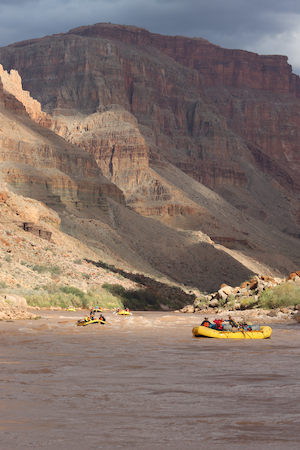
As a Grand Canyon river guide, I know something about facing sometimes harsh and dangerous conditions and finding beauty and meaning in the world. As a water lawyer, I know how difficult it is to align our legal and social systems with physical reality and human values—and yet that we can choose to do so. Right now, as fires rage and this two-decades-long drought takes its toll on rivers and water supplies across the Colorado River Basin, I’m concerned about the choices we will make for the future of the Colorado River and Grand Canyon.
In May, the Bureau of Reclamation announced emergency “drought response” measures to keep the Colorado River system from collapsing over the next year. For the first time in history, the amount of water to be released from Glen Canyon Dam and Lake Powell, through the Grand Canyon to Lake Mead, was reduced part-way through the water year. Along with other measures announced by Reclamation, this was necessary to keep Lake Powell from further plummeting to calamitously low levels—to where there is not enough water in storage for the City of Page and Navajo community of Le Chee to access their drinking water supplies; to where Glen Canyon Dam can’t produce power; to where water has to be released through emergency outlet tubes never designed for sustained operation.
I am told that these measures were announced immediately to accomplish the needed reduction in dam releases—and hence river flows—without risking a period of actually drying up stretches of the Colorado River.
The reductions come as a disappointment to me and my river guide friends—and our employers, the owners of whitewater rafting concessions that take people on weeks-long, wilderness-style expeditions through Grand Canyon. Already this spring has been windy, and with the boats heavily laden, it can stretch one’s physical limits to get downstream, navigating shifting currents and powerful whitewater. The lower and slower the water, the more time we spend pushing from point A to point B instead of exploring and enjoying the Canyon. Shallow, exposed, sharp rocks mean more time we may spend repairing boats rather than rowing them, and lower water also means less flexibility for campsites after long days on the water. The lower the water the more tired we all are, and our margins for safety and satisfaction narrow.
We river guides are always thinking about flows before a season and before a trip, and there’s been a lot of consternation lately about low flows—this year but in years to come as well. How sharp will the rapids and drops be? How will the paddleboat do in Horn Creek or Waltenberg? Do we need more days for trips billed as “Hikers Specials” if this continues, and will people sign up for trips that long? Will motorboats be able to keep running the river without smashing their props? This spring some guides have been choosing not to row wooden dories in the low water, because of the time and hassle that could go into repair if a dory cracks on a shallow rock. Friends recently returned from a trip with brutal wind and low water, where on the first day they barely made it six miles, pulling into camp with bloody hands and exhausted bodies. This was prior to the announced reductions.

But while we fret and grumble, guides also take great pride in being able to “take what we’re given,” and make the most of challenging conditions. Our job is to help people safely experience a challenging but wondrous place—so they can feel the magic, the fun, the laughter, and the awe, with everything that two weeks in the Canyon can bring into a life. We take satisfaction in finding and sharing the fun and beauty and joy even when the wind is menacing, the heat unearthly, the flows sluggish, or the whitewater gnarly.
Most of us recognize how privileged we are to spend so much time “below the rim” of the Grand Canyon, one of the great wonders of the world.
While not all managed as a true “wilderness” (to the extent such a thing exists), the thousands of square miles of canyon country through which we travel are among the most remote left in the lower 48. We boat through a ten-million-year-old river channel cut through billion-year-old rock—the history of the earth laid bare. There’s nothing like it to make you feel connected to it all; small, yet still significant.
Though dammed at both ends of the 278-mile-long canyon, the river still roils in the beautiful way of free-flowing water, its inhuman and unstopping dynamics speaking directly and musically to the human heart.
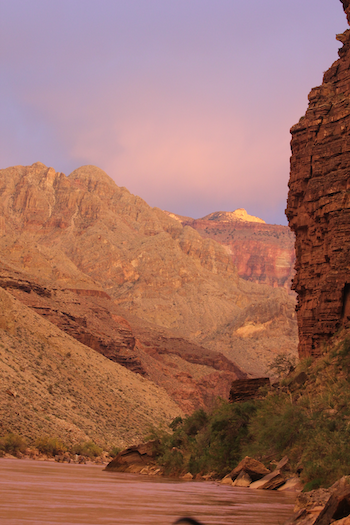
While the river channel is no longer subject to a muddy spring flood, summertime trickles, or the full force of upstream monsoon torrents, the Colorado River still supports a remarkable universe of interconnected life and ecosystems—riparian, aquatic, terrestrial, life forms from three of the continent’s four great deserts… full of intricate stories of ecological niches and interconnections that have evolved over eons.
We are privileged—to an extent unjustly—to spend so much time in a place revered by at least eleven tribes and indigenous nations for whom it has been home for centuries, and from whom European settlers took it by force.
Given that sense of supreme privilege, most of my guide friends have accepted the news of Lake Powell’s plummeting—and consequently uncertain flows in the Canyon—with a good deal of stoicism. The feeling is that we have been lucky—and if there’s no longer enough water for things to continue as they’ve been, we will adapt. With the drinking water of 40 million people on the line, who are we to be phased by the loss of river flows or our life-altering expeditions through the heart of the Earth?
I would more easily feel this way too, if the declining flows had been unavoidable—or were just for this year—or were part of a larger plan to make our use and treatment of the Colorado River or the Grand Canyon more sustainable, caring, or just.
But that is not the case. This year’s reductions from Glen Canyon are in response to an “emergency”—but an emergency that we have seen coming for decades. It didn’t have to be. What’s more, these reductions reflect only a small, temporary stopgap. They don’t fix the massive problem we have created on the Colorado River.
Since 1922, the law governing the Colorado River was set up to apportion and use more water than the river actually provides. The Colorado River Compact allocated at least 15 million acre-feet of water, then a 1944 treaty allotted an additional 1.5 million acre-feet to Mexico. That’s at least 16.5 million acre-feet of water that various states, nations, and water users can legally take out of the river. This doesn’t even include the more than a million acre-feet that evaporate from desert reservoirs and canals or are otherwise lost from the system. To add insult to injury, the Compact doesn’t address the needs of all of the Basin’s tribal nations and flat-out ignores the needs of river ecosystems and wildlife.
Even when the Compact was being ratified there were indications that the river’s flows were less than what was being divided up. In reality, the average flow in recent years has been more like 12 or 13 million acre-feet. Climate scientists and hydrologists tell us that soon we may have to live with as few as 11, or even 9, million acre-feet of water in the system.
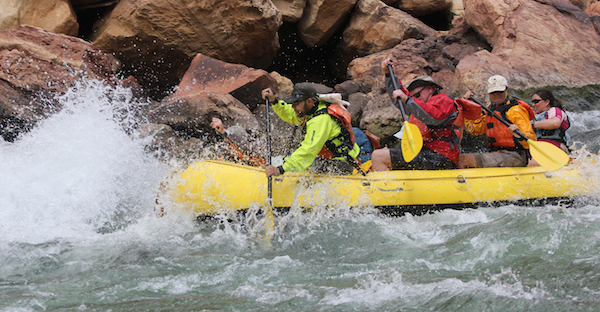
In the early years of the big dams, the Upper Basin (Colorado, Utah, Wyoming, and New Mexico) used far less water than allocated and a period of wet years filled up the reservoirs, providing a savings account.
Those days are gone. For about the last 20 years, actual usage has far exceeded the amount of water supplied by the river, and now with the rapid decline of Lakes Powell and Mead, we are seeing the inevitable impacts of this overuse.
What’s more, we have known this is happening. The Basin states and Reclamation have taken steps in recent years to begin to address it, but these steps are proving insufficient, and reservoir levels are plummeting far further than imagined. Hence this spring’s emergency measures—measures known to be short-term, inadequate to fix the problem, and that cannot necessarily be repeated.
Let me be clear, I am very much in support of these measures and recognize their necessity. If flows through the Canyon were not reduced this summer, the situation going forward would be even worse.
But I’m angry that it has come to this, and I’m scared and sad about what happens next. We are in need of a reckoning: we need to stop using more water than the river provides and blowing through our stored supplies at a terrifying rate. We have needed to do so for years now.
So can our reckoning, when done in a crisis, be done in a way that actually improves the integrity, sustainability, and justice of the system? I am nervous about the potential manifestation of the “Shock Doctrine”—where massive crises are used as an excuse to change systems in ways that otherwise never would have been socially, culturally, or even legally acceptable.
Last fall, a high-flow through the Canyon was cancelled. These flows are called for as part of the adaptive management practices developed to redistribute diminishing sand and sediment in the post-dam river channel—in turn protecting cultural sites, habitat, and recreational access. The fall flow was decided against, not because there wasn’t the water to do it— it wouldn’t have changed the total amount of water released over the course of the year—but because of costs and also apparently the “optics” of releasing the water all at once for “environmental” purposes when reservoir levels had dropped so low. Here already, we allowed a deviation from thoughtful policies and values because of the water supply “crisis”—though that deviation did nothing to help fix the crisis.

I believe that what’s needed to protect our water supplies going forward is fundamentally consistent with what we need to protect the Canyon and the extraordinary ecosystem the Colorado River creates. We must stop using more water than actually flows down the river.
We must all use less water throughout the Basin. This means massive change—but it’s doable, and what’s more, we really have no other choice. It’s long past time.
This reckoning may also mean more years of low annual flows through the Canyon, as we seek to stabilize the system and stop the plummet. Sadly, we may not be able to solve our problems while continuing to release the same amount of water from the Upper Basin to the Lower, through the Canyon.
But if we want to continue to have water to support the millions who rely on it, if we hope to take care of the Grand Canyon and its river, if we want to even have a choice about what flows look like in the future, we need to stabilize this system. We can’t continue to deny the reality of simple numbers, and we can’t rely on year after year of hurried emergency measures to get us by. That’s not planning, that’s triage.
Crises are opportunities. In the coming months and years, we can fix a mess of our own making and bring increased rationality, stability, perhaps even justice and accountability toward our planet and our people, to our water use in the Southwest.
Let’s take this opportunity, and not use our “crisis-that-didn’t-have-to-be” as an excuse to ignore what matters or degrade the health of the Grand Canyon—one of the most beautiful, humbling, and awe-inspiring places on our planet—a place that gives us inspiration to be better people, with broader vision and grander dreams.
The post I’m a River Guide and Water Lawyer. I’m Scared for the Grand Canyon. appeared first on American Rivers.

